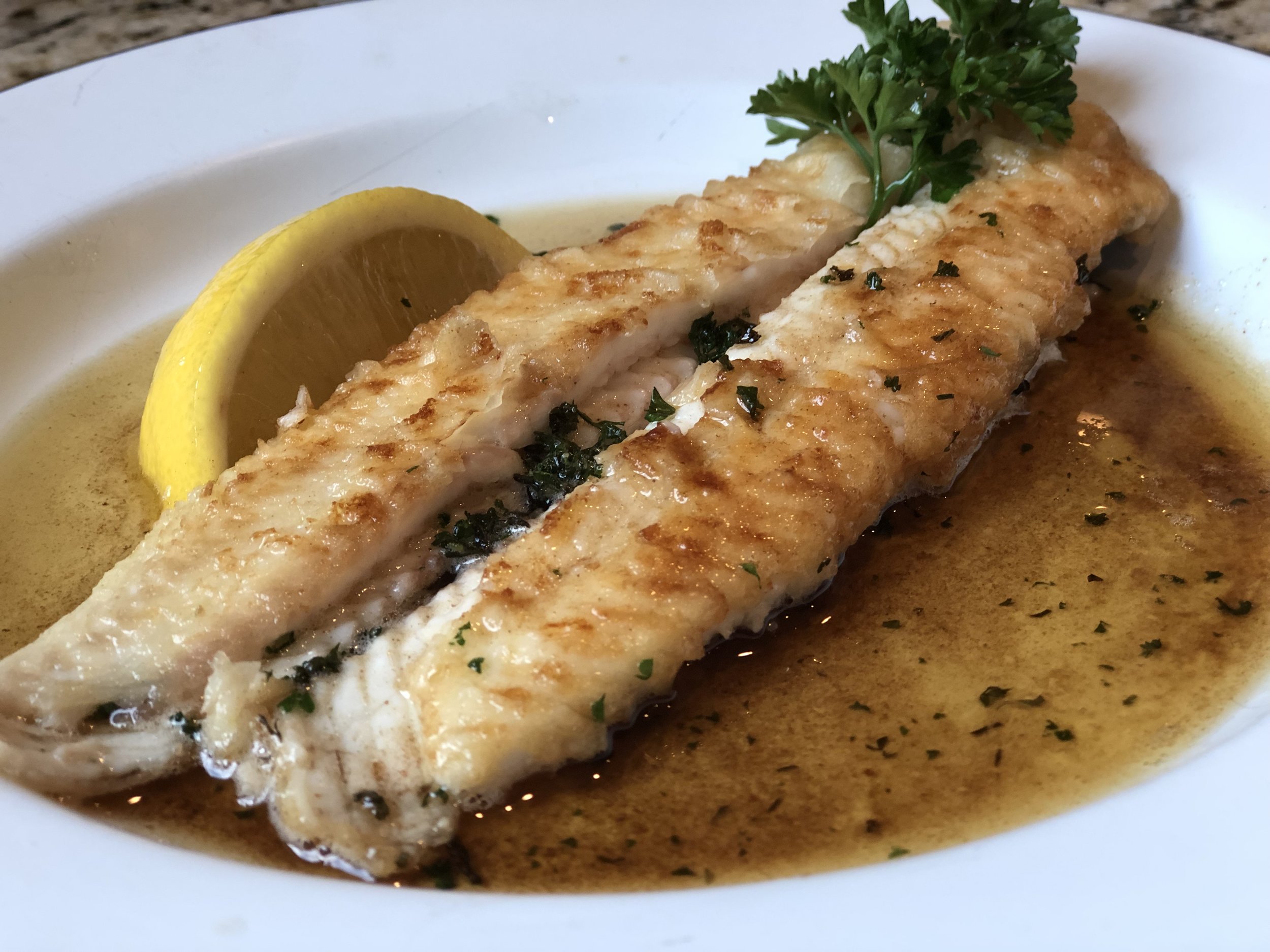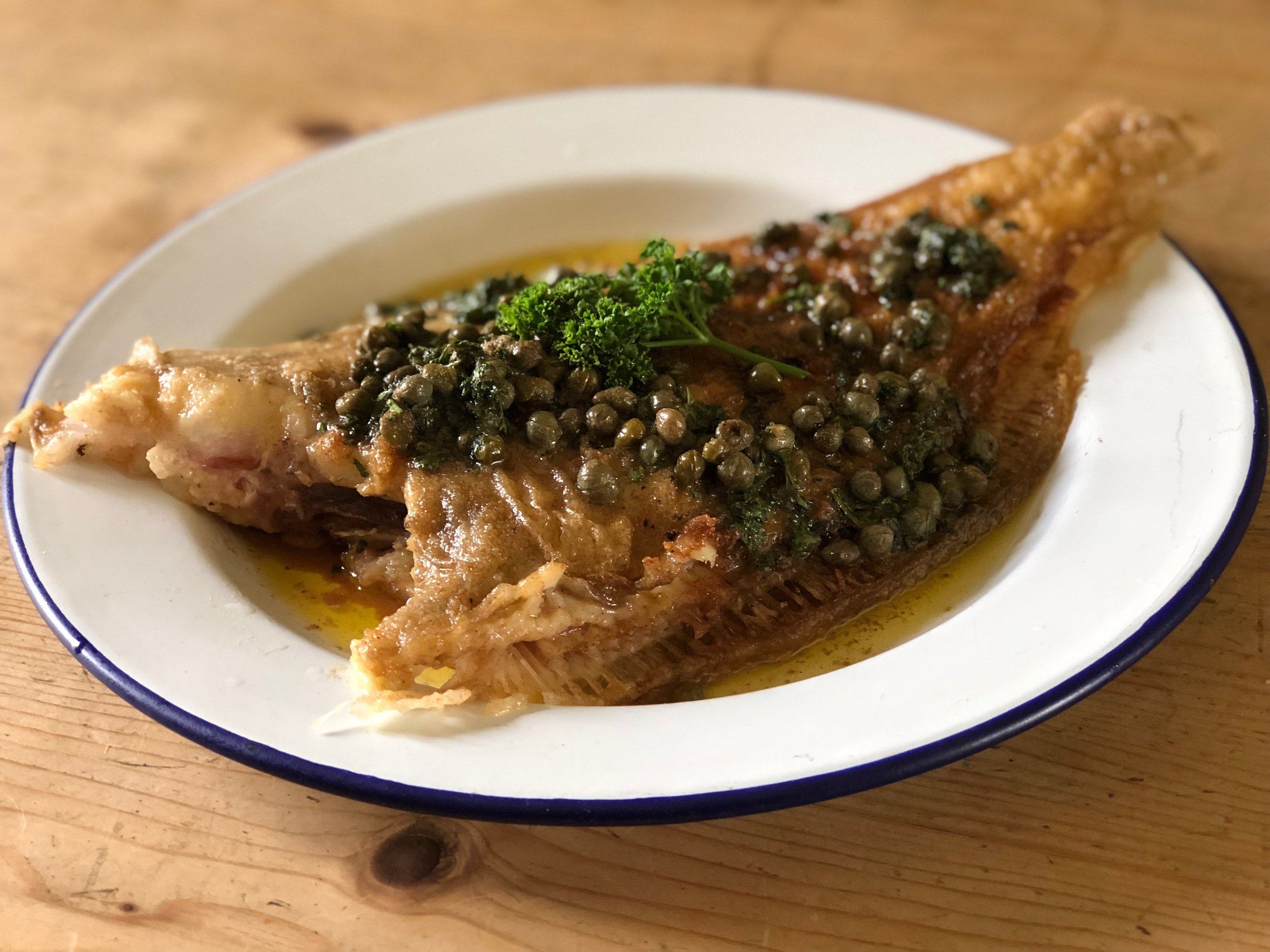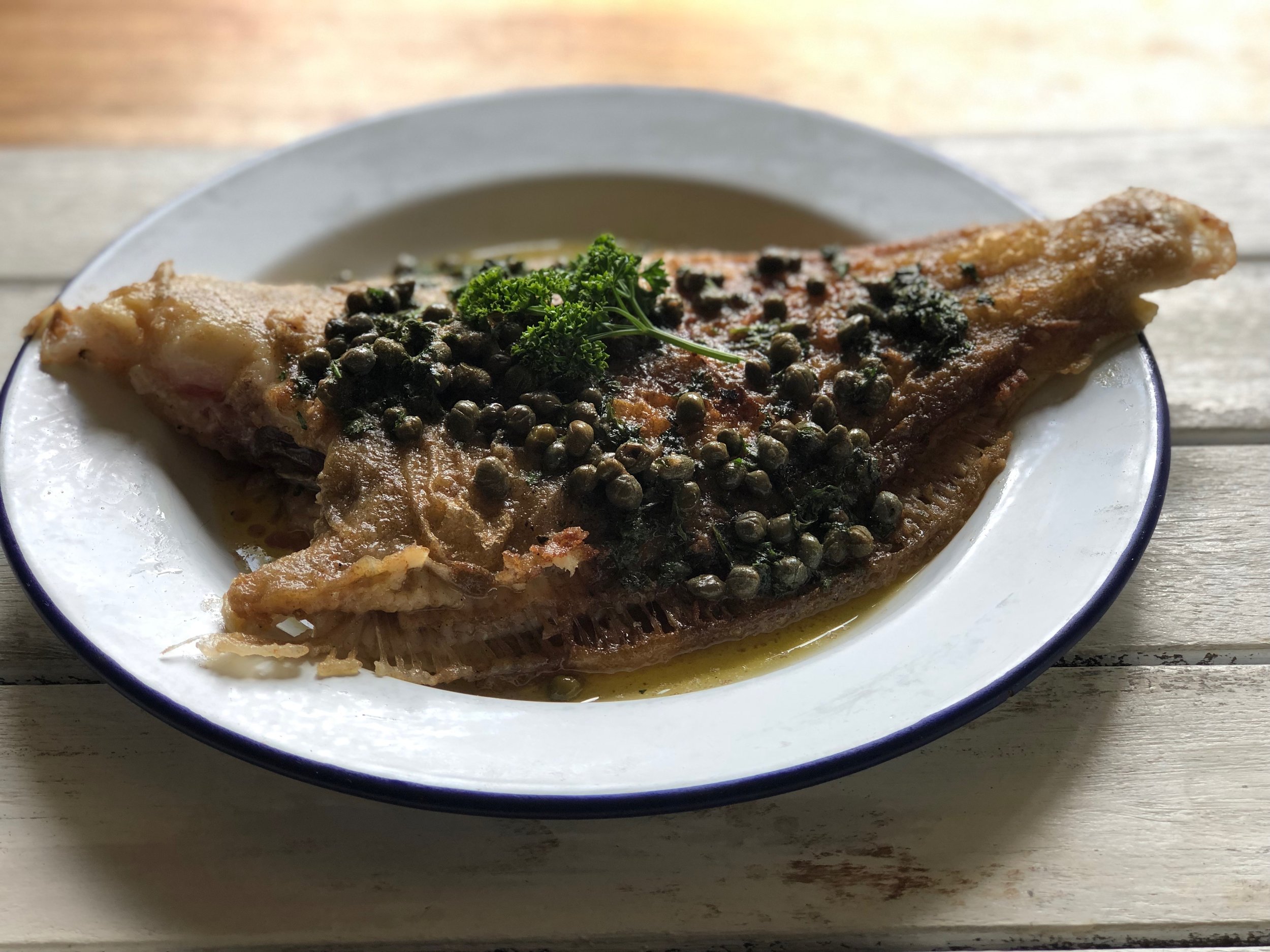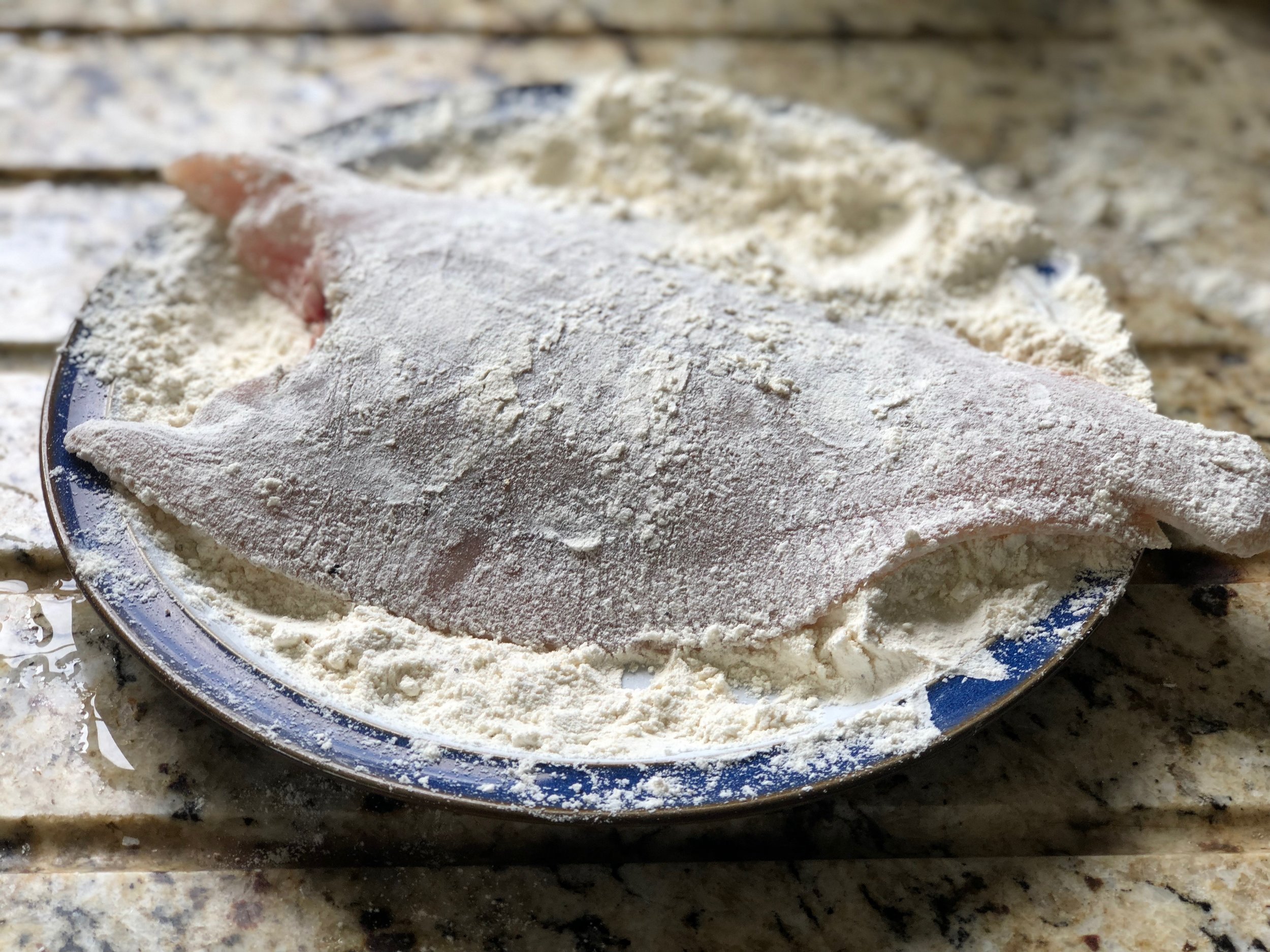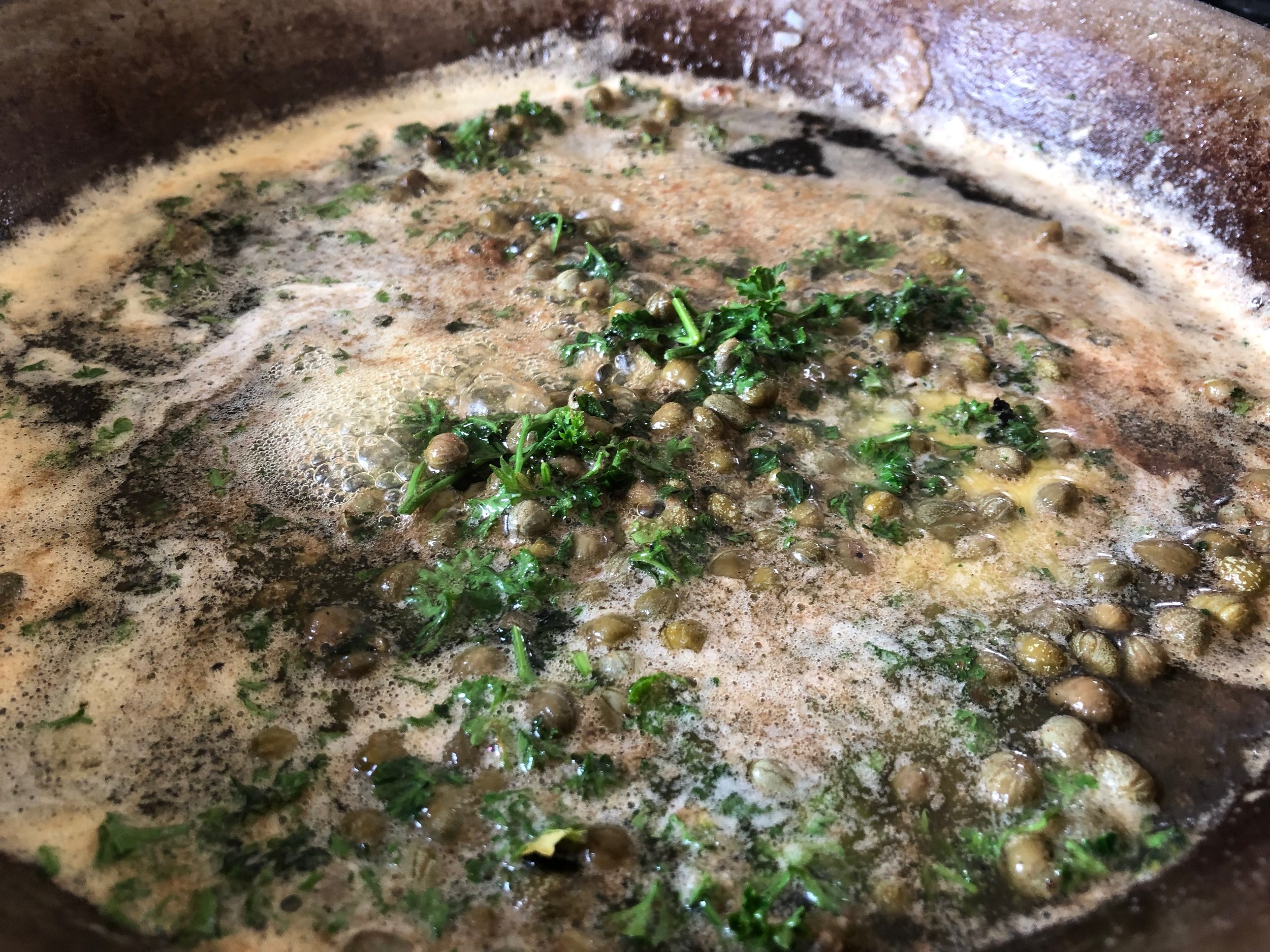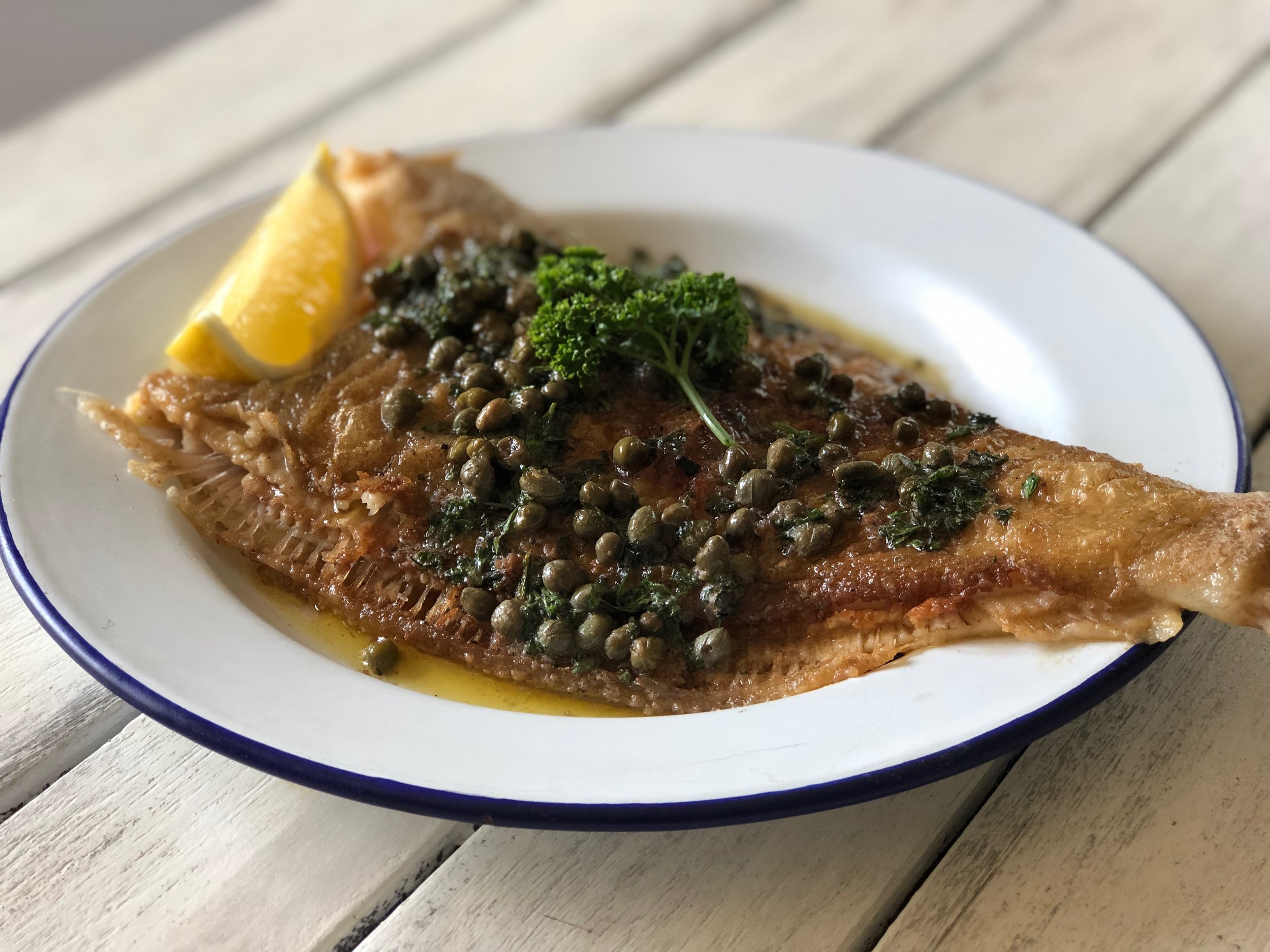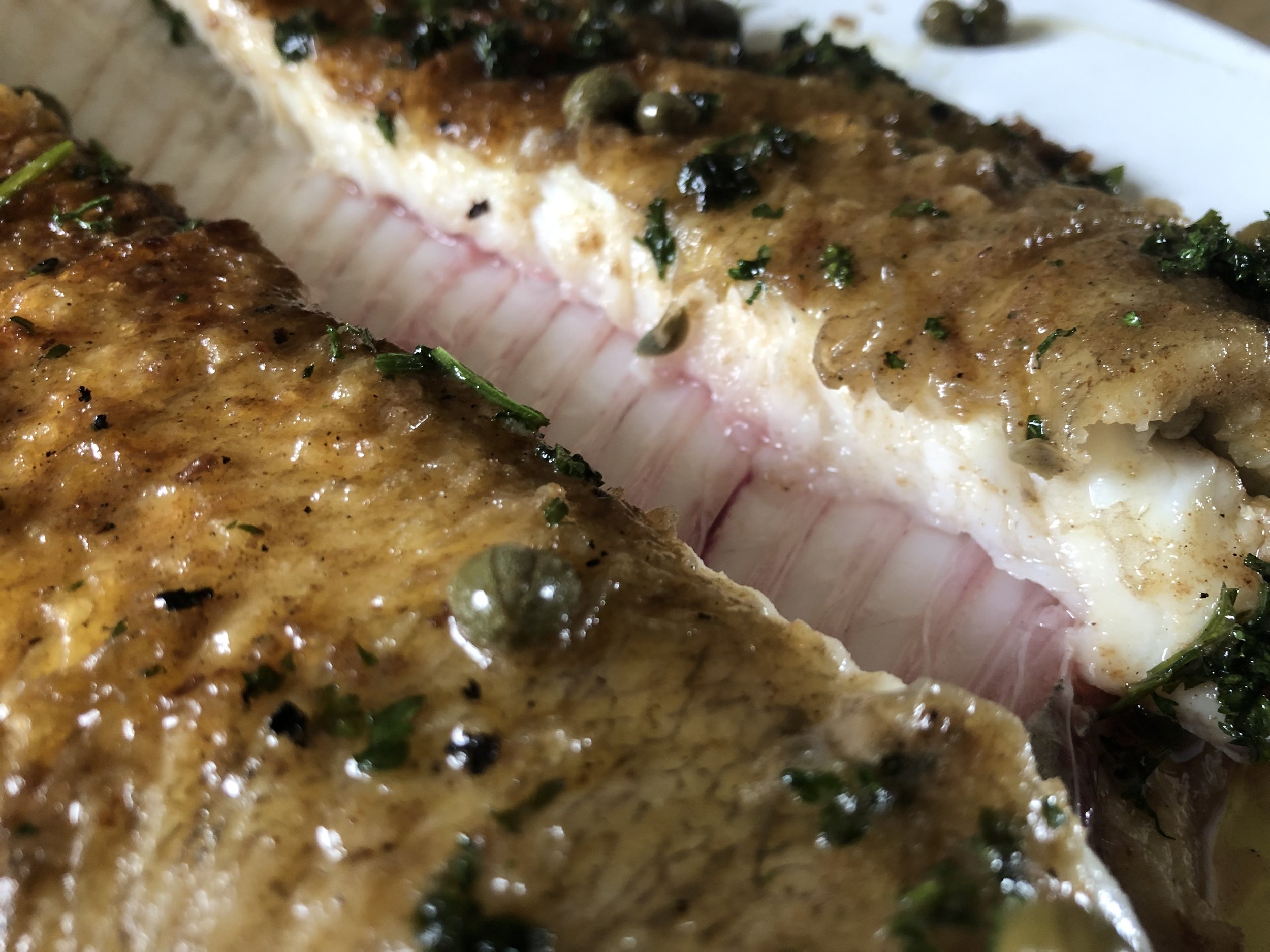Slip Sole Meunière
Dover soles are best described as a premium flatfish, ‘widely prized by chefs for its versatility, texture and ability to hold its flavour through a variety of sauces.’ Well, I don’t disagree with that - in all honesty it is, despite its restaurateur appeal, a perfectly easy fish to prepare, cook and eat if you follow a few basic steps. It’s also widely available, in season from the East coast all the way round through the Channel and beyond to the Celtic Sea, with a notable concentration in an area of sea above Trevose Head.
Because of its gravitas on a menu and the knowing looks that are exchanged when the whole fish arrives on a silver salver and is expertly filleted and portioned at the table, by a be-gloved waiter using fork, spoon and a deft hand, it’s sometimes overlooked for basic home cooking, just because of that perceived premium.
Soles are actually very accessible and in a very affordable form when bought as ‘slips’ or small soles, which are too insignificant to tempt most chefs, but when served simply and two or three at time, make an incredibly delicious and quick supper. Small they may be, but the flavour is huge, with an exquisite and delicious sweetness.
The Meunière part of this dish just means ‘dredged in seasoned flour’ a simple, but effective way of crisping and flavouring the outer skin of the fish whilst frying in butter. Of course adding fresh herbs like chopped parsley or chervil and chopped capers can also enhance the flavour of the resulting ‘beurre noisette’ very agreeably.
It’s worth noting that the Dover is not best eaten fresh from the water but allowed to pass the rigor stage before preparing. This makes skinning easier and firms the flesh, although it’s perfectly acceptable to cook skin-on.
Slip Sole Meuniere
Serves 1
Ingredients
1, 2 or 3 fresh slip soles, skinned, fins removed.
150g seasoned plain flour
250g salted butter
1 lemon cut into wedges.
Fresh curly parsley chopped and a couple of springs to garnish.
Method
You can get your fishmonger to do this for you when he skins the fish, but if presented with whole fish, then simply prep them by cutting off the lateral fins, tail and pectoral fins with a sharp pair of kitchen scissors. Remember to cut from the tail towards the head. You can also remove the head as well if you like, cutting round just behind the gills, but with slips it’s quite ok to leave on. Dry the fish with kitchen roll and dredge in the seasoned flour shaking off any excess.
Melt the butter in a heavy saucepan until it bubbles and starts to turn a nut brown colour. When slightly foaming, introduce the fish and cook equally on either side for approx 2 mins, or until the floured sides are golden and crispy.
Remove from the pan and transfer to a serving plate.
We now ‘unzip’ the sole by carefully teasing away the outer fin frills from the tail to the head. Then make an incision along the backbone of the fish with a knife and again gently push away the meat of the bone sideways, on both sides, until the full backbone is exposed. Now lift up the backbone from the tail and remove from the fish. You can now knit the two top fillets back together and the fish is ready for serving.
Add the chopped curly parsley to the warm beurre noisette and combine. Pour the mixture over the sole(s) and serve with the lemon wedges, buttered sourdough and the parsley garnish.
Fit for a king……
Megrim on the bone with capers and parsley
Megrim or megrim sole or sometimes ‘whiff’ are what we call left-handed flatfish (the way their eyes are set on their head) and are found all around the UK, but tend to inhabit deeper water compared to the more inshore flatfish species like dab, Dover sole and flounder.
Typically exported - the French and Spanish adore them, they’ve never really come up on the radar for UK consumers, buy of course they should do. In season and in prime condition from Scottish, or in this case Cornish, waters megs in good nick, for me anyway, go head to head with any brill or lemon sole worth its salt.
These recipes are meant to demonstrate the innate simplicity of cooking fresh, seasonal seafood and really there’s no easier solution to cooking an amazing fish such as the meg, than on the bone with minimal fuss. Fish cookery should not be a daunting prospect and although many folk see it as being overly complicated and perhaps shy away from experimenting or even ordering off a menu and I do get that. However, a little knowledge goes a very long way and hopefully I’ll demonstrate here that less is undoubtedly more.
Megs can be found throughout the year, but in Cornwall and the South West mid-summer to autumn is probably the best time to try them. You’re more likely to buy them from an independent or coastal fishmonger, but they are there and just need to be made more of. Check the firmness of the flesh, the brightness of the eyes and the redness of the gills. The fish should smell of nothing other than the sea’s natural ozone. If you must, get your fishmonger to fillet, but maximum flavour will always come from a flatfish like this cooked on the bone.
Ingredients - serves 2
One whole fresh Cornish megrim (gutted) about 1kg
200g Cornish sea salt butter
50ml Cold pressed rapeseed oil
2 tbs capers
A good handful of fresh, chopped curly parsley
Plain flour for coating
Ground black pepper
Sea salt
Lemon to serve
Parsley sprig to garnish
Method
Firstly trim the fins and tail from the fish using kitchen scissors and always cut from the tail end to the head, against the lie of the fins. Next remove the head (not essential) by cutting around the bone behind the gills with a sharp knife.
Season the flour well with salt and pepper and coat the fish liberally all over, shaking off any excess.
Heat the oil and butter in a heavy frying pan and once melted and bubbling well, introduce the fish carefully head end down, holding the tail and cooking on a relatively high heat for 3 mins. Roll the butter mixture around the fish and ensure that the skin doesn’t catch if not using a non-stick pan.
Using a fish slice turn the megrim over and cook on the other side again for 3 mins until the skin is golden brown. Carefully lift the fish from the pan and place on a board, as it will continue to cook. Add a little more butter to the cooking liquor and the capers and chopped parsley. Stir and cook over a low-med heat for a couple of minutes to release the flavours and the butter takes on a nut brown appearance and nutty aroma.
Place the fish on a warm plate and spoon over the hot caper and parsley ‘beurre noisette’

